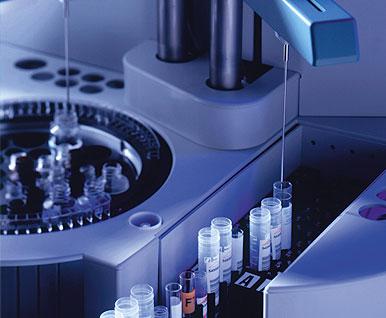
Georgia Tech has teamed up with Children’s Healthcare of Atlanta to further the research visions of each institution. Tech’s advanced engineering sciences, paired with Children’s medical knowledge and experience, have produced a unique opportunity for research and innovation. The flexible, integrated, results-focused team, led by Beth Howell, Barbara Boyan, Paul Spearman, Kris Rogers, and Steve Cross, has taken the original concept of the partnership to new heights.
At the onset of the partnership in 2006, Children’s hoped to utilize the engineering and research abilities of Tech professors to enhance the quality of its pediatric outcomes. Today, both institutions have benefitted in numerous ways. Children’s has access to a wide range of engineers and scientists that can participate to address both clinical and non-clinical problems. The healthcare group has also procured an affiliation with a Top Engineering School and has the potential to commercialize its discoveries. Similarly, Georgia Tech now has access to clinicians and patients for research purposes and a “living lab” for investigators and students. The affiliation with a Top Children’s Hospital, the potential to perform clinical translational research, and access to clinical facilities demonstrate just a few of ways Georgia Tech has profited from this partnership.
Currently, Tech and Children’s are collaborating in the areas of Immunology and Vaccines, Transplant Immunology, Pediatric Healthcare Technology Innovation, Autism Research, Developmental Lunch Biology, Cardiovascular Biology, Cystic Fibrosis, and Endothelial Cell Biology. With the establishment of the seed grant program last year, collaborations between Tech and Children’s increased and major strides were made in multiple areas of research. The Center for Pediatric Healthcare Technology Innovation (CPHTI) was created as an environment dedicated to the development of new techniques, technologies, and therapeutics to diagnose, treat, and cure diseases and conditions that affect children. In this arena, engineers, scientists, and clinical investigators combine their expertise to design and implement technologies that will “grow and children grow.”
BME’s Manu Platt has conducted sickle cell research aimed at reducing the incidence of stroke in children with sickle cell disease. Gregory Abowd, from Tech’s Health Systems Institute, is currently researching autism and ways to design vision, speech, and wearable sensor technology to analyze child behavior. Ravi Bellamkonda, a professor of Biomedical Engineering, has developed a new way to treat invasive brain tumors by capturing the migrating cells that spread the disease. Ajit Yoganathan, also a BME professor, is working to correct the defect that causes two in every 1,000 US babies to be born with a single ventricle heart defect. He has developed a tool for virtual surgery that allows heart surgeons to view the predicted effects of different surgical approaches in repairing the defect.
The GT/Children’s Initiative is well underway with its goals for this year. The team hopes to continue to formalize CPHTI’s surgical research program, raise funds to complete the Marcus building site for joint GT/Children’s research, and integrate its efforts more closely with Emory and Scottish Rite to move technologies to the clinic more efficiently.